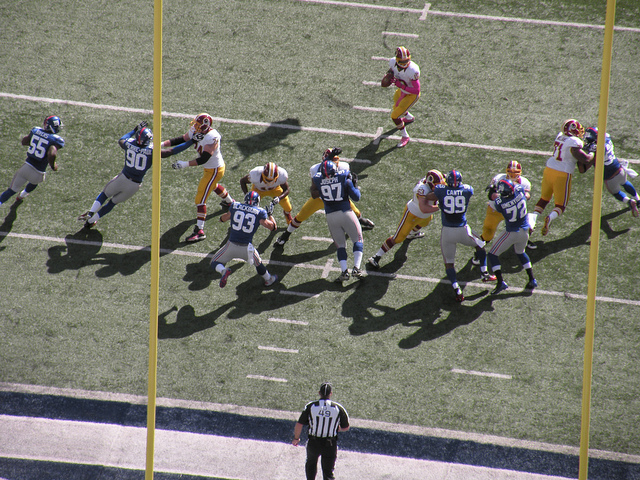Greg Bedard with another great analysis piece, this time for Peter King's new MMQB site, that looks at what defenses can do against the QB's (Robert Griffin, Colin Kapernick, Russell Wilson ) that run the read option. Here's a couple of snippets from the article and Stanford Defensive Coordinator Derek Mason white boarding up the scheme:
Against a pocket passer in a traditional offense, gap responsibility stops at D. And the defense has the upper hand in such matchups, essentially playing 11 against 10 because the quarterback isn’t a threat to run. But when you introduce a QB who has the ability to fake an inside handoff and then scoot around the weak end of the defense, the E gap is created in an area that is typically left unguarded. The game now becomes 11-on-11, the new math of the NFL.
—
The first thing a read-option quarterback looks for when he gets to the line of scrimmage is to see if the defense has left itself short somewhere. That is, is the E gap being accounted for? The easiest way to take away the E gap is to play a 3-4 (because everything else is covered) and rotate a safety into the area that would normally be unguarded. But it’s not a perfect solution. This forces a defense to become more vanilla in its pass coverage, because a lone safety lined up deep doesn’t allow for convincing presnap disguises.
Stanford Defensive Coordinator Derek Mason talks about how to stop the read option.
Grantland also has a great article on the this subject and mentions how the health of the quarterbak is a risk, but maybe not as big as most people think:
Of course, the trade-off for offenses who use these plays is obvious — if your quarterback is a potential (or actual) runner, then he will potentially (or actually) get hit by very large, very fast defensive players. This, as much as any tactical challenge, seems to be the real reason NFL defensive coaches aren't quaking at the prospect of the proliferation and improvement of schemes they really had no answer for last season. "The problem is for those quarterbacks, one of these days one of them is not going to walk off," Detroit Lions defensive coordinator Gunther Cunningham said recently. "It's a lot of pressure on him to physically do that." The NFL writ large — coaches, general managers, other executives, and owners — have spent the past 30-plus years devising increasingly elaborate ways of doing two things: (1) paying quarterbacks more, and (2) protecting them on the field, through both scheme and rule changes. The read-option makes the quarterback a constant target.
This reality may very well lead these plays to vanish, but there's also plenty of reason to think that, executed correctly, they pose no more risk than a traditional pass play, during which a quarterback — eyes focused downfield, arm extended, unable to protect himself — is a sitting target. A properly restrained quarterback should slide or get out of bounds essentially anytime he pulls the ball on a read-option play, and a major reason why NFL teams like Ault's arc blocking scheme is that it adds a personal protector for the quarterback.
Image from MattBritt00 on Flickr
